OM System M.Zuiko Digital ED 90 mm f/3.5 Macro IS PRO
4. Image resolution
Let's check how the tested lens compares – its results in the frame centre and on its edge presents a graph below.
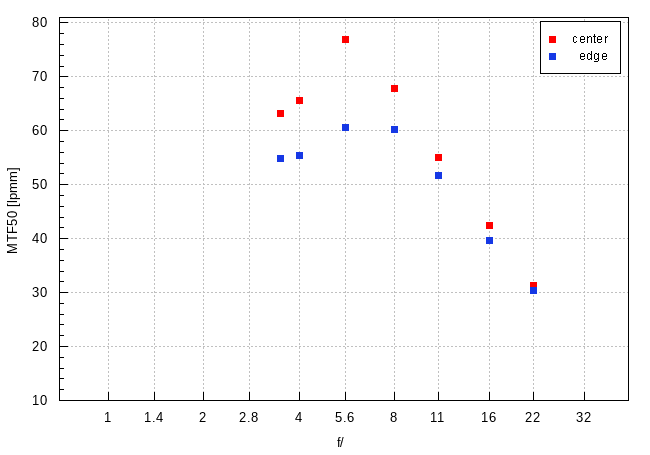
Please Support UsIf you enjoy our reviews and articles, and you want us to continue our work please, support our website by donating through PayPal. The funds are going to be used for paying our editorial team, renting servers, and equipping our testing studio; only that way we will be able to continue providing you interesting content for free. |
- - - - - - - - - - - - - - - - - - - - - - - - - - - - - - - - - - - - - - - - - - - - - - - -
Looking at the results you can say that the OM 3.5/90 does exactly what you expect. At the maximum relative aperture it exceeds distinclty 60 lpmm and produce very sharp, crisp images; on stopping down to f/5.6 it started to brush against 80 lpmm.
Nobody expected any miracles here, the laws of physics would prevent them. Record performance on the Micro 4/3 sensors is achieved near f/2.8 and the OM 3.5/90 can't offer you such an aperture fastness. Approaching its diffraction limit on stopping down the aperture by 1-2 EV is the only thing that you can expect from a perfectly corrected fixed-focal lens. The tested lens does exactly that much. By f/5.6 it gets a result of 77 lpmm, very close to 79-81 lpmm reached by lenses as fast as f/1.2 by the same aperture, so the ones that perform there within their diffraction limit for sure.
The same laws of physics that prevented the OM 3.5/90 to approach record resolution values, were even more ruthless when it came to an idea of using this lens with teleconverters – especially the MC-20, officially touted as the one that will allow you to reach a truly impressive 4:1 mapping scale. Indeed such an idea is doubly wrong but let's focus on one aspect of it for the moment, the other one will be dealt with in the summary section.
Now let's glance at the resolution graph reached at 180 mm, a focal length available after attaching the Olympus MC-20 teleconverter.
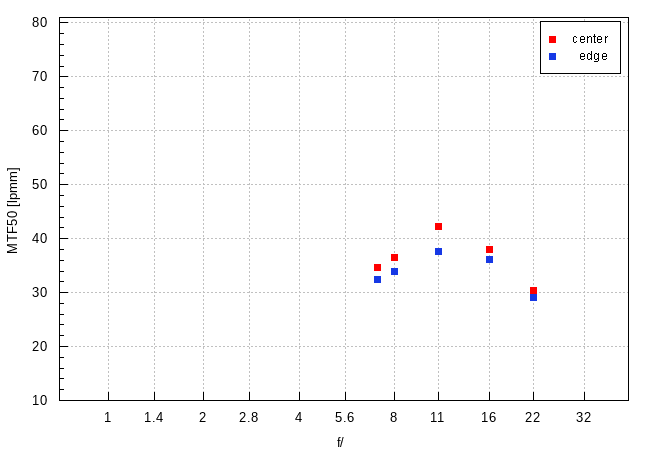
A good prime reaches the peak of its possibilities on stopping down the aperture by 1-2 EV from the maximum relative aperture level. Of course it's not a secret that attaching converters of different types makes a lens's performance weaker. After all a converter is supposed to cooperate smoothly with lenses of all types so can't be optimized with just one model in mind. When a lens-plus-teleconverter set reaches its resolution peak on stopping down the aperture by 2-3 EV from the maximum relative aperture, you can say its performance is good and you shouldn't have any objections.
The problem is such: if an f/3.5 lens is attached to a 2x converter, their combined maximum relative aperture amounts to f/7.1. After stopping down by over 2 EV, in order to get the peak of the performance, you land in a range from f/11 to f/16. Even in excellently corrected Micro 4/3 lenses such a range practically guarantees you MTFs of 40-50 lpmm so below the decency level or just brushing against it.
It's easy to predict the result of this experiment. The OM System M.Zuiko Digital ED 90 mm f/3.5 Macro IS PRO attached to the MC-20 teleconverter doesn't provide very sharp images because it simply can't do so. The situation gets even worse in the macro scale but it's a topic we leave for our summary section.
At the end of this chapter, traditionally, we present crops taken from photos of our resolution testing chart which were saved as JPEG files along the RAW files, used for the analysis above.
| Olympus E-M5 II, 90 mm, JPEG, f/3.5 |
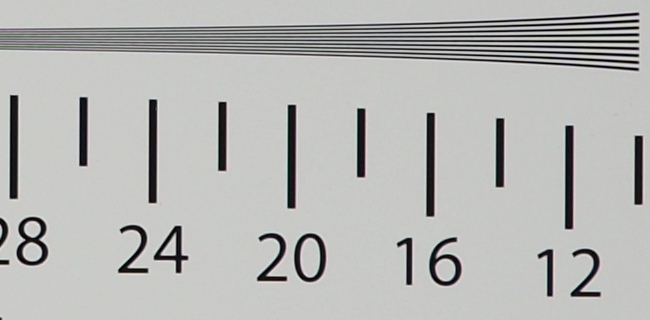 |
| Olympus E-M5 II, 90 mm, JPEG, f/5.6 |
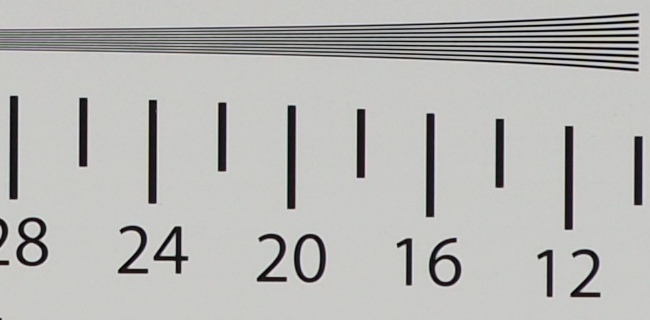 |
| Olympus E-M5 II, 180 mm (TC), JPEG, f/11.0 |
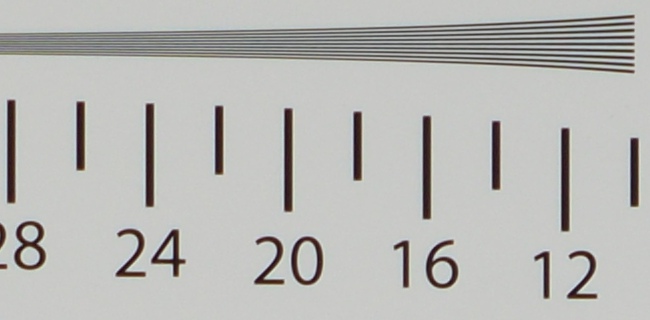 |






